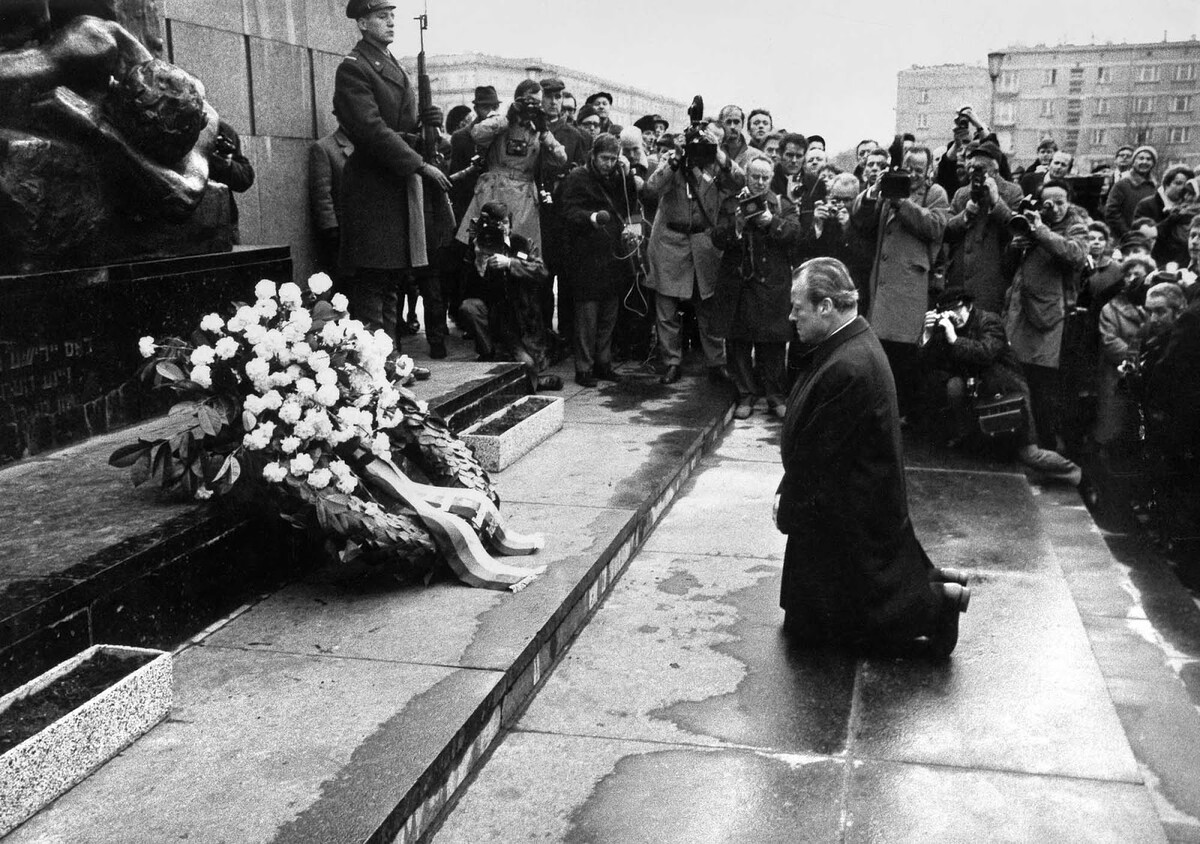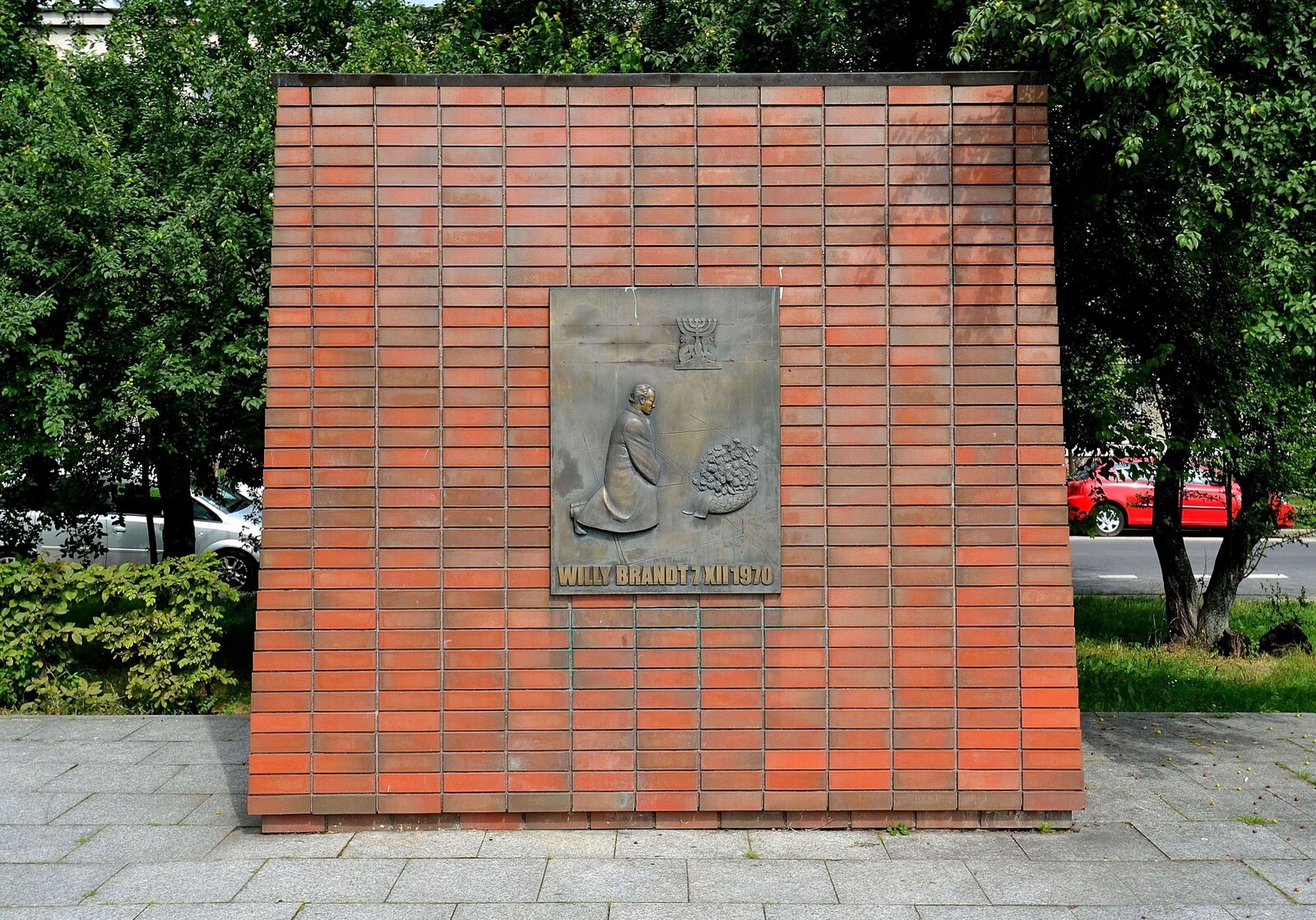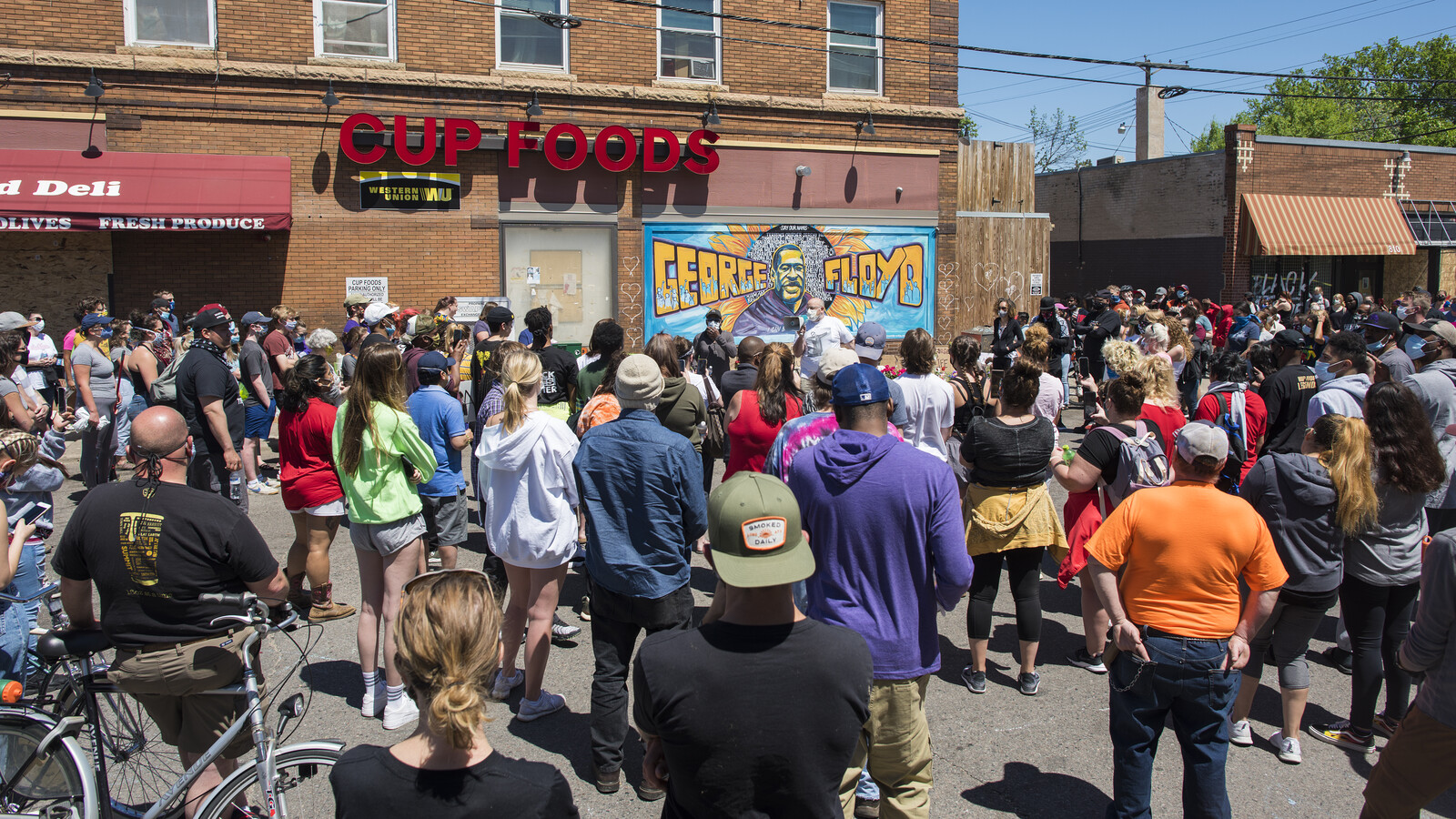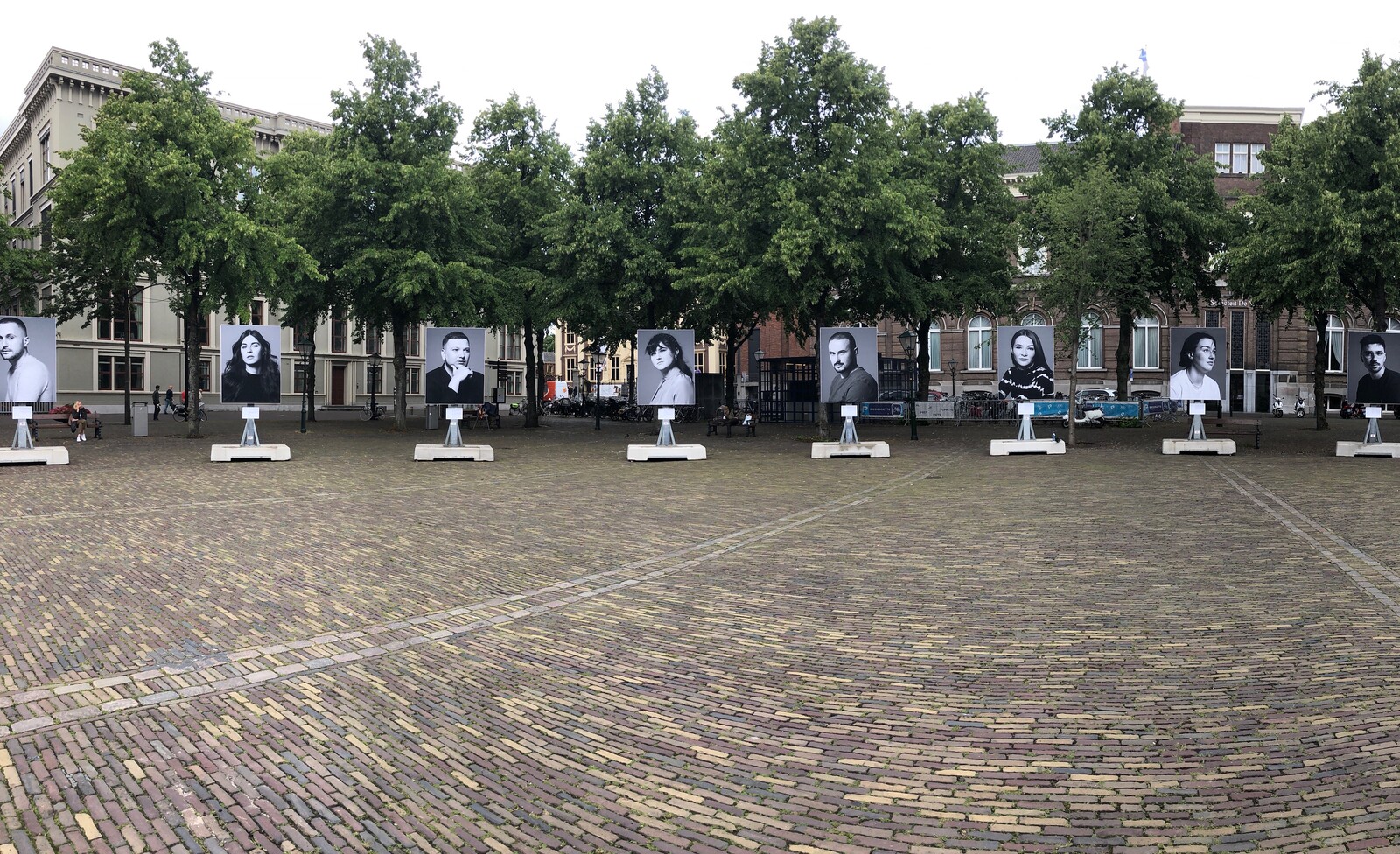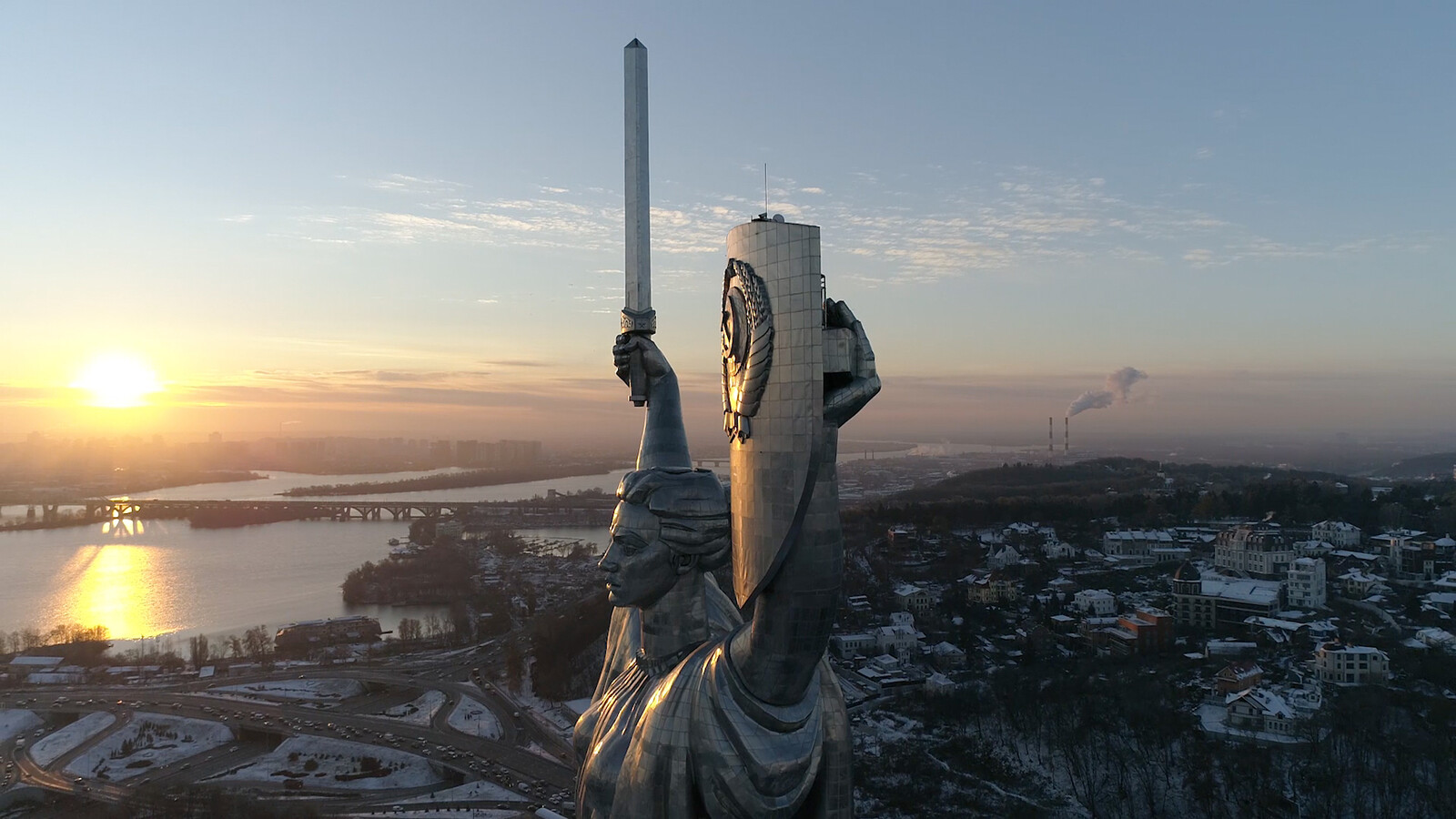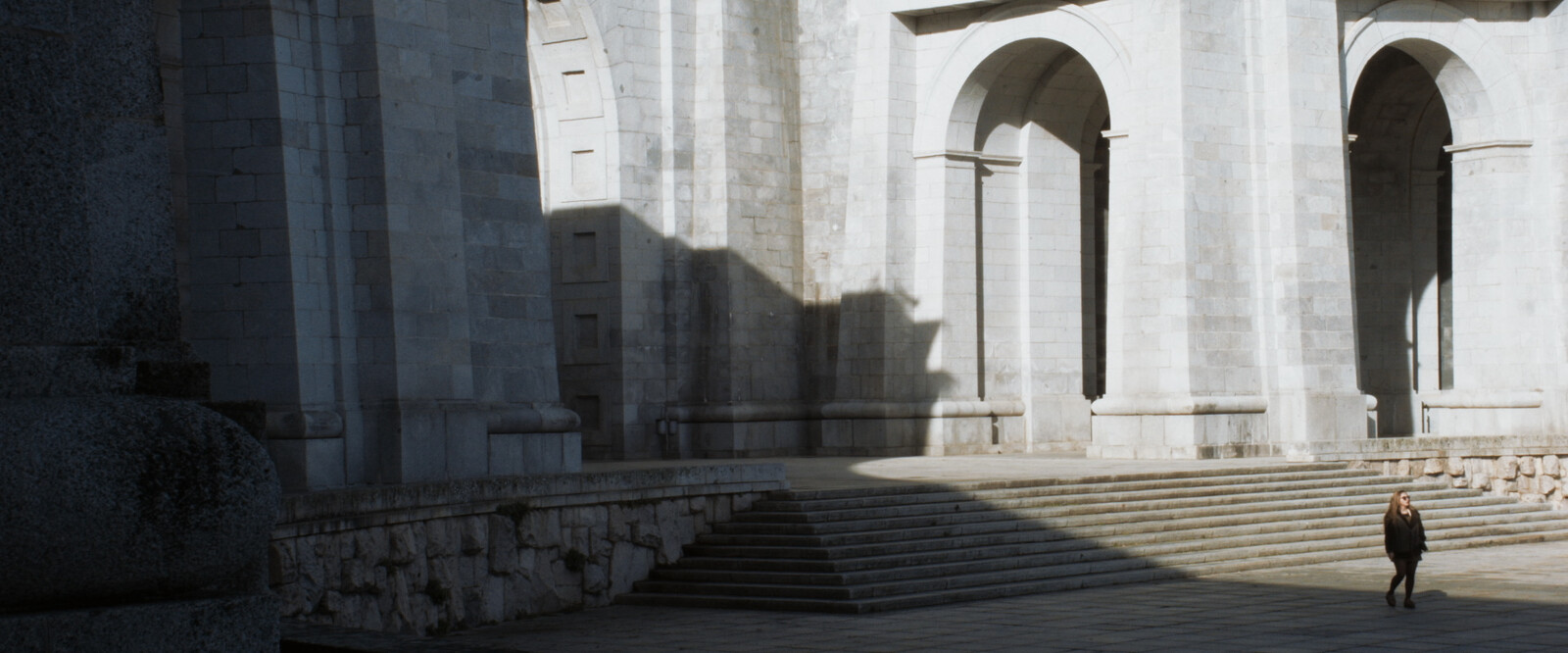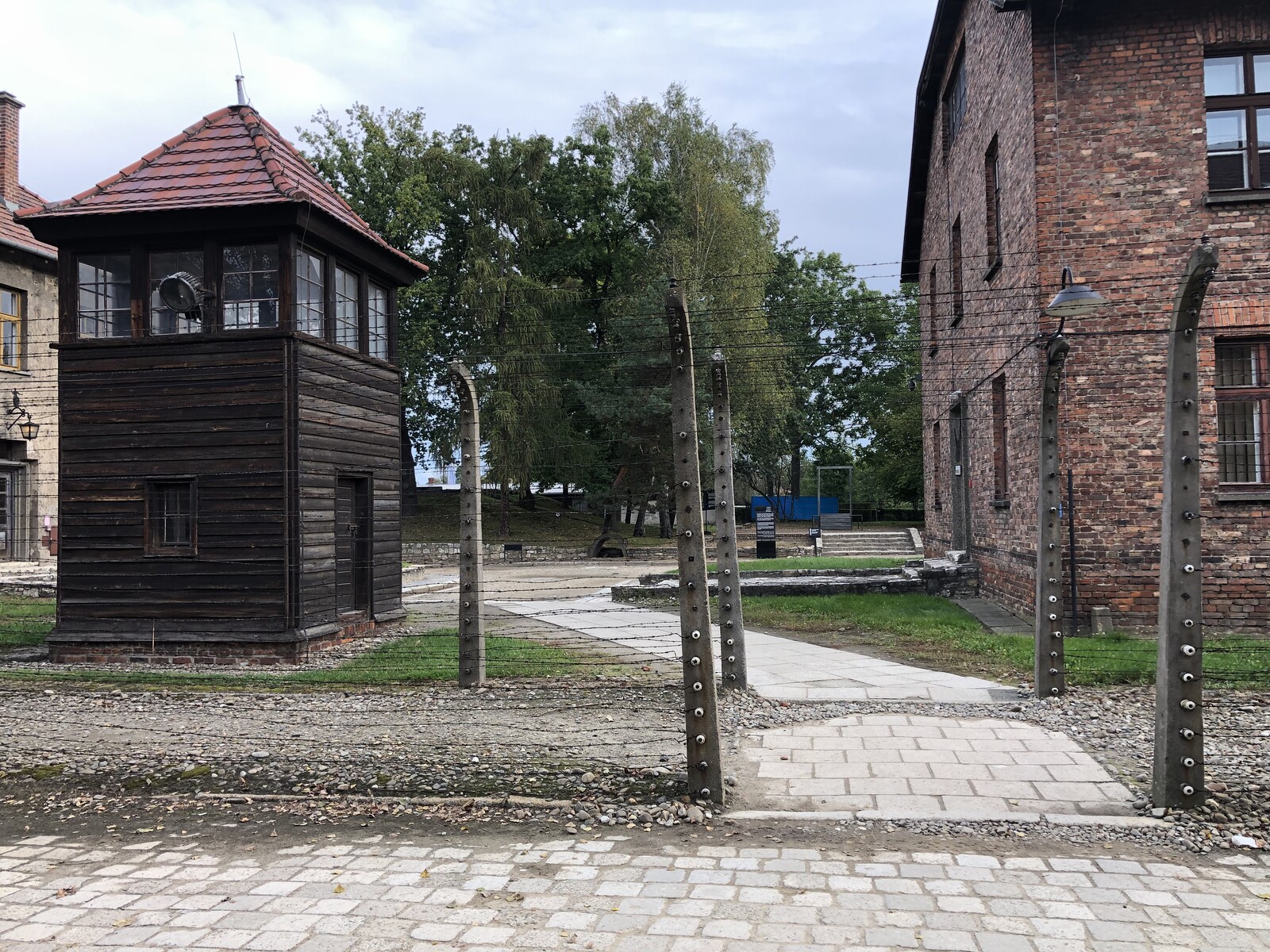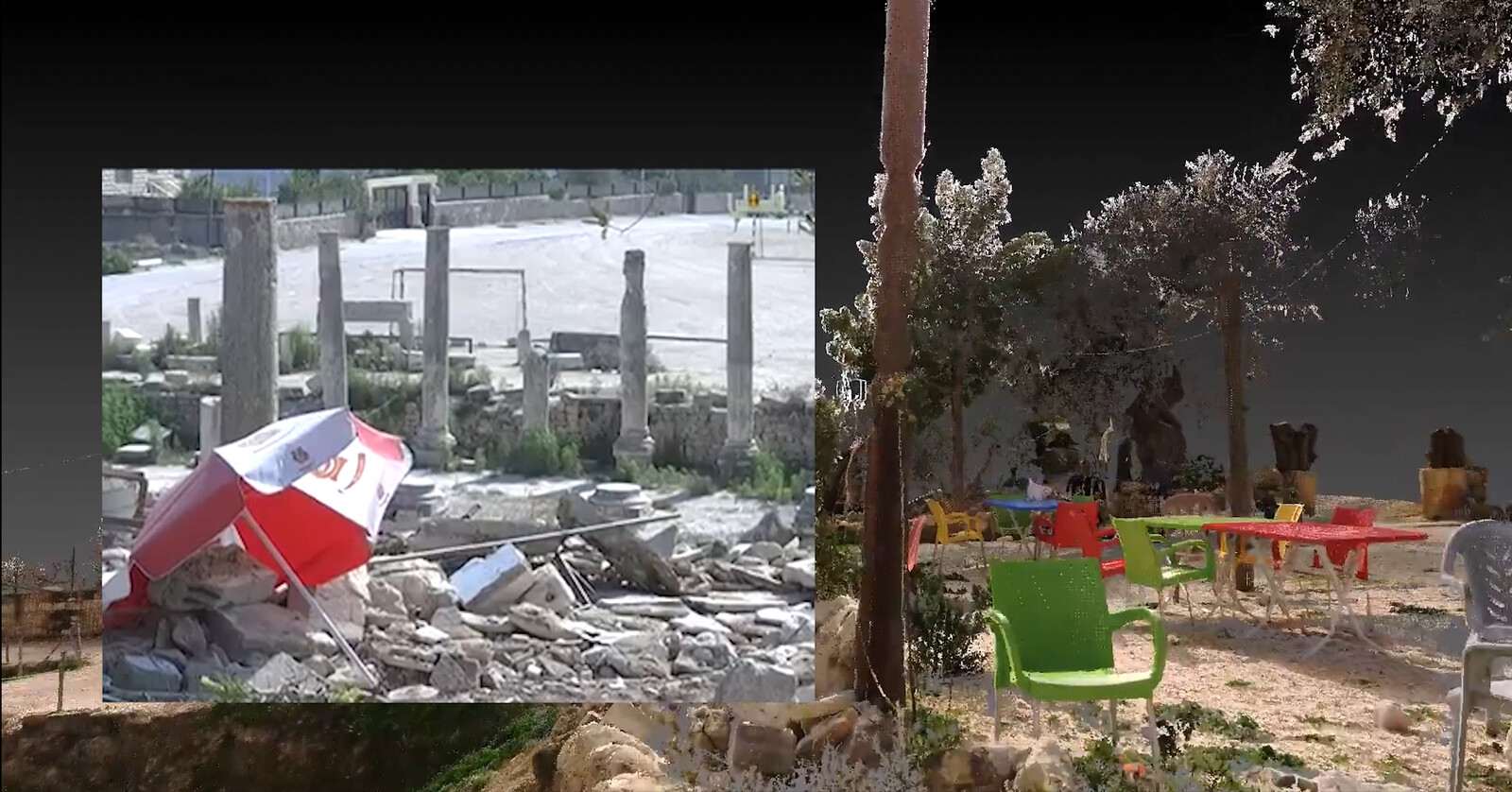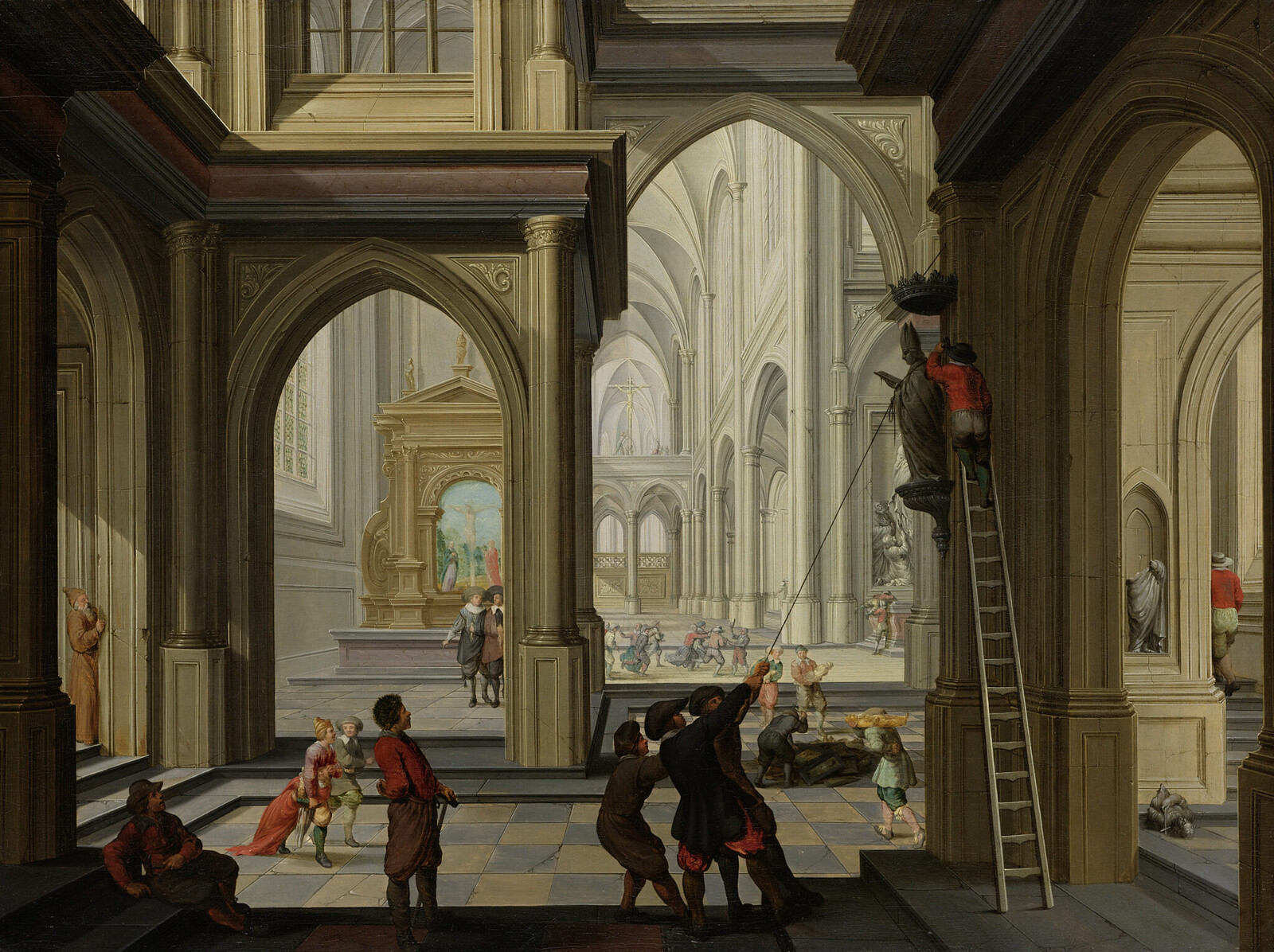On a gloomy winter day of 1970, Willy Brandt, the Chancellor of the German Federal Republic (1969–1974) stepped out of his car and slowly walked towards the Warsaw Ghetto Uprising Memorial, a monument dedicated in 1948 to honor the 1943-act of Jewish resistance against SS Brigades in German-occupied Poland during World War II.1 Wrapped in a somber dark coat, the Social Democrat chancellor (SPD) laid a funeral wreath of white carnations on the steps leading up to the west side of the massive figurative bronze memorial, stepped back, and fell to his knees onto the wet pavement. For thirty-seconds Brandt remained still, looking into the distance. In the account of one of the witnessing journalists, the Chancellor’s petrified expression looked “as if he needed all his strength to fight back tears.”2 No words were uttered, and according to the West German media, the gesture was received as an impromptu, honest, and humble apology.3
Brandt’s act of bending a knee to the ground, or genuflection, became part of a media frenzy in the West.4 However, in West Germany, the gesture received mixed reviews. A 1970-public opinion poll published in Der Spiegel revealed that West Germans were divided about the appropriateness of the gesture. The poll “Durfte Brandt knien?” (“Was Brandt allowed to kneel?”) revealed that 41% of respondents considered the gesture to be appropriate, while 48% considered it to be an exaggeration.5 Despite the West German public’s hesitation, Brandt’s kneeling sent a powerful and long-lasting message: West Germany was peaceful, repentant, and ready to atone for Germany’s crimes against humanity. Shortly after, Time magazine chose Willy Brandt as its “Man of the Year,” and in 1971 the West German chancellor received the Nobel Peace Prize for his accomplishments as a “European Bridge-Builder.”6
Brandt’s apology was more than pure gesture. Indeed, the West German chancellor was in Poland to sign the Warsaw Treaty, which would institute Germany’s acceptance of the border with Poland established by the Allies in 1945. His visit and the apologetic gesture were thus deeply ingrained in the politics of reconciliation between West Germany and Eastern Europe, known as Ostpolitik, which was first initiated during Brandt’s tenure as Foreign Minister of West Germany (1966–1969).7
In 1989, after the fall of the Berlin Wall, Brandt reflected in his memoir about what had prompted his gesture in front of the Warsaw Ghetto Uprising Memorial. “At the abyss of German history and burdened by millions of murdered humans, I acted in the way of those whom language fails.”8 Brandt’s conscious silence echoes the common expression “words cannot be found,” which draws out a socio-cultural limit for textual and verbal representation.9 Through the absence of words, Brandt renders the National Socialist crimes as something beyond the reach of human thought, rationality, history, and forgiveness. However, his gesture suggests otherwise. Kneeling in front of the memorial honoring Jewish resistance, situated in what used to be Warsaw’s Jewish ghetto, Brandt participates in a long history of gestures of repentance. The West German Chancellor’s genuflection echoes similar gestures by historical figures such as Henry IV, who kneeled in front of Pope Gregory VII seeking absolution.
Brandt’s genuflection inaugurated a global phenomenon that I term the “cult of apology.” Following art historian Alois Riegl’s concept of the “cult of monuments,” I argue that the cult of apology developed as a European secular religion, imbued with lessons of humanity to avoid the twentieth-century break of civilization to reoccur.10 Indebted to Judaic notions of collective atonement and to the Christian practice of private repentance, apologies have come to play an important role in secular societies.11 The secularization of repentance practices and the transformation of apology from a private ritual into a public one are two distinctive characteristics of what apology scholars Roy Brooks and John Torpey have termed the “age of apology.”12 Consequently, the politics of apology have had an impact on the public and private spheres alike. The cult of apology is situated within this boom of apology.13 Moving beyond words, the age of apology has been transformed into a cult by tapping into the built environment.
Apology and Humanism
While rooted in the Holocaust as a breaking point of the Enlightenment as a humanist project, the cult of apology emerges out of the need to rebuild a “collective moral community” after World War II.14 As Hannah Arendt identified in The Origins of Totalitarianism, the radical evil of National Socialism revealed the perplexities of the eighteenth century notion of the “rights of man.” Since the “rights of man” were thought as an inalienable, intrinsically human, and equal, independent of any government or human law, there was no nation-state or institution capable of protecting them beyond its own borders without transgressing national sovereignty. With no superior law to reinforce human rights, the essential recognition of all humans as having equal rights to have rights was thus contingent to the nation-state. Once the rise of tyranny and totalitarianism crushed the humanistic ideals of the European nation-state, an increasing number of minorities, amongst them the Jews, were rendered stateless. In this context, being stateless was equal to being rightless.15
The cult of apology is part of the vast efforts to restore the loss of inalienable human rights. In this, it does not function in isolation. The cult of apology works close to transitional justice, economic and symbolic reparation, truth commissions, and human rights organizations forming relationships that vary from collaboration to opposition. However, in most of its variations, the cult of apology reflects an active effort in creating a collective moral community with a shared sense of humanity. This is why the cult of apology is quintessentially global, because it responds to the vacuum of international institutionality to reinforce inalienable human rights. In this sense, it belongs the post-World War II international human rights discourse, inaugurated with the signing of the United Nations Charter, on June of 1945.16 Put simply, the cult of apology has to transcend nation-states in order to promote a shared culture of human rights to preside over civil nationally-rooted rights. The Warsaw genuflection exemplifies the global reach of the cult of apology. Kneeling in silence, in front of a memorial to Jewish resistance in Warsaw, in the context of a new politics towards the Eastern Bloc, Brandt conflated German victims—Jews, Poles, Eastern Europeans, and beyond—to offer a wide-reaching gesture of recognition.
Brandt’s inability to reach for words to express Germany’s remorse points towards one of the central conundrums of the cult of apology: apologies as a global phenomenon rise alongside the emergence of the Holocaust as a trope for the limit of humanity. Forgiveness is rendered impossible when confronted with the Holocaust. However, despite their futility, apologies rise in its aftermath. In this sense, Brandt’s genuflection is not an exception, but reflects the incipient stages of a shift and re-assemblage of the transnational landscape of German responses to guilt and repentance.17 Much has been written about Nazi trials, Germany’s punishment for its crimes against humanity, and postwar German Wiedergutmachung (reparations) politics, which started in the immediate aftermath of World War II.18 While Brandt’s gesture was by no means the first step towards reconciliation with the Eastern Bloc, it became a symbol for a much larger, complex, and partly invisible process. In the case of postwar West Germany, reparation politics reached so far that symbolic gestures and memorials were needed to anchor these efforts, to make them visible and permanent.
Memorializing an Apology
Like gestures, memorials have been invoked to speak when “words cannot be found.” It is not a coincidence that Willy Brandt’s genuflection, an overtly Christian gesture, occurred in front of a Jewish memorial. Here, visual representation and commemoration played a crucial role in circumventing the limits of textual representation. Nathan Rapoport’s figurative memorial represents the Warsaw ghetto uprising through a heroic group of historical and allegorical figures combining Jewish archetypes with mytho-proletarian socialist realism. While the west-side of the memorial is dedicated to Jewish heroism, the east-side renders Jewish martyrdom in the form of a procession of twelve figures into exile.19 Both sides are held together by a granite wall echoing the Ghetto walls, and—as James Young points out—the Western Wall in Jerusalem.20 Thus, by kneeling in front of the heroes of Jewish resistance, Brandt chose a persuasive visual backdrop for his Ostpolitik, transforming the Holocaust into the central symbol of German guilt. The Chancellor’s gesture was paramount because no form of reconciliation between West Germany and the Eastern Bloc was possible without an act of public repentance. But the backdrop for his gesture was equally important: the figures of the memorial stood in for a simultaneous recognition of both Jewish and communist victims, and its massive structure symbolized yet another wall: the Berlin Wall.
Illustrating the entanglement between apology and memorialization, the Warsaw Ghetto Uprising Memorial is not the only notable memorial in this story of German repentance. In December 2000, commemorating the thirty-year anniversary of Brandt’s genuflection, a monument was inaugurated to honor and remember the gesture. The modest scale of the monument stood in clear contrast to the list of authorities and prominent guests attending the event, including the German Chancellor Gerhard Schröder, the Polish Prime Minister Jerzy Buzek, Willy Brandt’s widow Brigitte Seebacher-Brandt, and Günter Grass. Located only 700 feet away from the Warsaw Ghetto Uprising Memorial, in a park that was developed on the actual historical site of the former ghetto, the Brandt monument mimics its referent. The monument to Brandt’s genuflection is also a wall with slightly slanted surfaces—although at a much more modest scale and with brick cladding—and includes a figurative relief placed in its center.
While the brick-cladded structure of the monument was designed by architect Piotr Drachal, the bas-relief was conceived by artist Viktoria Czechowska-Antoniewska as a figurative representation of the widely-known photographs of the genuflection. The bas-relief depicts Brandt kneeling on the pavement in front of the funeral wreath. The massive group of photographers, authorities, and attendees that can be seen in the backdrop of the real photographs of the event have been omitted, as have the buildings in the horizon. Rendered fuller than any other element in the relief, Brandt’s kneeling profile sticks out against a backdrop of flat pavement enhanced with perspective lines. Since the actual Warsaw Ghetto Uprising Memorial is cut out from the frame, in the upper right side of the bas-relief, one of the two menorahs of Rapoport’s design metonymically stands in for the whole. Behind the menorah, completing the horizon of Czechowska-Antoniewska’s composition, is an unmistakable marker of Jewish martyrdom: three parallel strings of barbed wire. Mimicking Brandt’s silence, the use of text in the monument is minimal. The central relief is only graced by Brandt’s name and the date of the genuflection, while a succinct historic plaque narrates the context of the monument’s dedication on one of its lateral surfaces.21
Few thirty-second gestures have become memorials. The Brandt memorial illustrates the urge to make an evanescent gesture like an apology permanent.22 Be it as an offering of an apology, as a demand for apology, or in this case, as a reminder of an apology, memorials have come to be part of the apologizing ritual. Apologetic memorials do not cease to be memorials. Instead, their meaning exceeds the conventional understanding of these markers as remembrance and warning. Judging past actions, portraying moral stances towards the past, acknowledging guilt and collective responsibility, these types of memorials develop new historical narratives rooted in the power of reconciliation and forgiveness. Following Carl L. Becker and Mircea Eliade, within a visual culture that has long forgotten its oral traditions, apologetic memorials represent something that would otherwise be immaterial.23
Apologies are speech acts. Embedded in the fleeting present, they lack the potential to endure without the help of textual inscription and visual representation. While in the past, apologies had been passed on to the future mainly as words, within our increasingly disposable textual and visual culture, apologetic memorials respond to the growing demand to see, feel, encounter, and touch apologies. As such, built apologies act as reliquaries of a secular repentance ritual that can be reenacted. Within an enlarged understanding of apology as a multimedia phenomenon, built apologies become constitutive elements of the apologetic exchange that makes these gestures permanent in space, keeps the apologetic dialogue open in time through commemoration, recalls the victims and the offense, expands the apology’s public, and creates a record for the future.
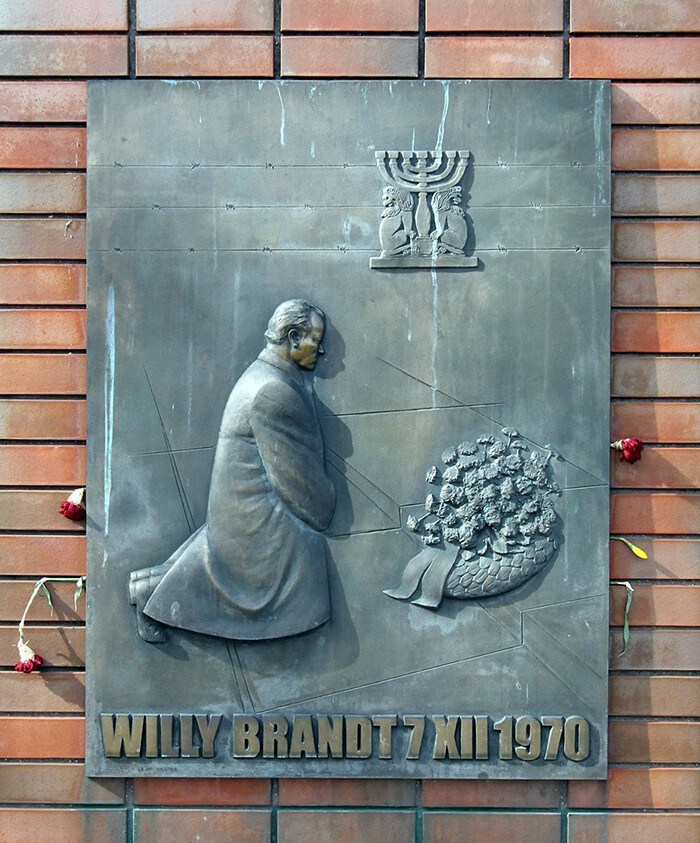

Willy Brandt memorial plate in Warsaw, designed by Wiktoria Czechowska-Antoniewska, 2000. Photo by Szczebrzeszynski, July 2, 2009.
Forgiving and Forgetting
The seduction of the cult of apology is based on its twofold healing powers stemming from the reparation for historical injustices and the restoration of a shared sense of humanity. Apologies are meant to ease the pain of an injustice and to repair the victims. Extending the apologetic action in space and time, apologetic memorials transform these expressions of remorse into long-lasting symbols of national reconciliation. Yet despite the power of apologies, forgiveness can elicit forgetting, and apologies’ promise of new beginnings can easily slip into an empty rhetoric of reconciliation in the face of persistent injustices. For example, in response to the Max Planck Society’s apology for the crimes committed during the National Socialist regime in the name of science by its forbearer, the Kaiser Wilhelm Society, Jona Laks—a survivor of the Mengele-Twin experiments—refused to grant forgiveness.24 During the Society’s public apology event, she argued that instead of forgiving, the community of survivors should strive to keep the memories of the atrocities against Jewish people alive.25 Warning those present not to forget, she added: “forgiveness erases memory.”26
The opposite can be true as well. During the same event, Eva Mozes Kor, a member of Children of Auschwitz Nazi Deadly Lab Experiment Survivors (CANDLES) accepted the apology and, directing her response to humankind in general, declared: “Forgive your worst enemy. It will heal your soul and set you free.”27 Thinking with both these responses to the Max Planck Society’s public apology, the cult of apology is a method to analyze the role that the material world—objects, monuments, memorials, and buildings—can play in processes of reconciliation, reparation, and redistribution. Acknowledging both the potentials and the dangers of built apologies, the cult of apology can offer a new lens to examine the built environment and its relationship to current and past struggles for recognition.
Conclusion
The cult of apology and the history of the Warsaw Ghetto Uprising Memorial can contribute to understanding the aftermath of contemporary events like the recent murder of George Floyd. On Monday May 25, 2020, George Floyd, a forty-six-year old unarmed black man, was murdered by four police officers for using a counterfeit $20 bill in Minneapolis, Minnesota. One of the police officers kneeled on his neck for almost nine minutes, while the others put pressure on his back. Floyd died shortly after.28 Public outrage and protests across the US have followed to demand justice for Floyd and for so many others like him, as well as to change the structural racism, injustice, and inequality so deeply embedded in the nation.29 Apologies surfaced quickly.30
On Sunday May 31, days after having fired the four officers involved, Minneapolis Police Chief Medaria Arradondo visited the site of Floyd’s killing. He spoke to the community, and according to CNN reporter Sara Sidner, kneeled in front of the makeshift memorial that local activists had built in honor of George Floyd.31 Arradondo’s gesture echoes Willy Brandt’s kneeling in Warsaw. In both these cases, kneeling becomes an act of respect, recognition, and repentance that exceeds the verbal and textual domain. Kneeling, as well as apologetic memorials, conveys something that words cannot fully grasp.
The cultish aspect of apologies emerges in this constant repetition, or what Diana Taylor would call a “repertoire” of repentance.32 Police chief Arradondo’s kneeling occurred in the conspicuous absence of an official apology by the US president. Unlike his visit to the site of Floyd’s killing, Arradondo’s verbal apology was not planned or premeditated. Instead, it was an impromptu response to reporter Sara Sidner’s insistence that he speak to Floyd’s family, who were at that moment on air during CNN’s coverage of the event.33 Although the police chief uttered the words “I’m sorry…” in the absence of an official apology, it remains unclear whether he was speaking on behalf of the police or on behalf of himself as an individual.34 Without justice for Floyd, reparation for his family, and concrete steps towards police reform, what is the meaning of Arradondo’s impromptu apology? Could it be more than the repetition of a trope of empty words? In contrast, his gesture in front of the memorial is tied to a long lineage of kneeling in respect and protest, as well as a widespread understanding of the role of place in memorialization. However, kneeling in this context becomes a dialectic, being both a sign of repentance and an instrument of violence. Thus, by kneeling in front of Floyd’s memorial, Arradondo is not only paying his respects, but he is also—as a policeman—recognizing the violent law enforcement tactic that killed Floyd.
What remains to be seen is if and how Arradondo’s apology will take material form. Will there be a permanent memorial for George Floyd, for Breonna Taylor, for Ahmaud Arbery, and for so many others? Will these memorials be apologetic? Will they clearly identify the crime and the perpetrators and address the racism, injustice, and inequality that allowed these killings to happen? Will they inspire guilt and action? This is all perhaps too much to ask of a memorial. Nevertheless, apologetic memorials are sites of political struggle for justice, representation, and recognition. In other words, these questions can be worked through space and materiality.
For a detailed examination of the Warsaw Ghetto Uprising Memorial see: James E. Young, The Texture of Memory: Holocaust Memorials and Meaning (New Haven: Yale University Press, 1993), 155–84.
While there have been debates about the spontaneity of the gesture, Brandt himself argued that it was an unprompted impulse, a statement that was confirmed by historical witnesses. See Willy Brandt, My Life in Politics (New York: Viking, 1992); Sontheimer, “Willy Brandt in Warschau.” For an in-depth analysis of Willy Brandt’s genuflection, see Valentin Rauer, “Symbols in Action: Willy Brandt’s Kneefall at the Warsaw Memorial,” in Social Performance: Symbolic Action, Cultural Pragmatics, and Ritual, eds. Jeffrey C. Alexander, Bernhard Giesen, and Jason L. Mast (Cambridge: Cambridge University Press, 2006), 257–82.
Sontheimer, “Willy Brandt in Warschau.”
Ibid.
“Willy Brandt—Facts,” Nobel Prize, June 17, 2019, ➝.
Peter H. Merkl, “The German Janus: From Westpolitik to Ostpolitik,” Political Science Quarterly 89, no. 4 (1974): 803–24; Gert Krell, “West German Ostpolitik and the German Question,” Journal of Peace Research 28, no. 3 (1991): 311–23; James H. Wolfe, “West Germany’s Ostpolitik,” World Affairs 134, no. 3 (1971): 210–19; Gottfried Niedhart, “Revisionistische Elemente und die Initiierung friedlichen Wandels in der neuen Ostpolitik 1967–1974,” Geschichte und Gesellschaft 28, no. 2 (2002): 233–66.
Brandt, My Life in Politics.
The use of this expression to designate massive crimes has a long history. See Words Cannot Be Found: German Colonial Rule in Namibia: An Annotated Reprint of the 1918 Blue Book, eds. Jan-Bart Gewald and Jeremy Silvester (Leiden: Brill, 2003).
Alois Riegl, “The Modern Cult of Monuments: Its Character and Origin,” trans. K.W. Forster and D. Ghirardo, Oppositions 25 (1982): 20–51; Alois Riegl, “Neue Strömungen in der Denkmalpflege,” Mitteilungen der K. K. Zentralkommission für Erforschung und Erhaltung der Kunst- und historischen Denkmale 3, no. 4 (1905): 85–104, ➝.
Nicholas Tavuchis and Aaron Lazare studied the rise of public apologies in the news, revealing how pervasive these statements have become in our contemporary culture. Nicholas Tavuchis, Mea Culpa: A Sociology of Apology and Reconciliation (Stanford: Stanford University Press, 1991); Aaron Lazare, On Apology (Oxford: Oxford University Press, 2005).
Roy L. Brooks, “The Age of Apology,” in When Sorry Isn’t Enough: The Controversy over Apologies and Reparations for Human Injustice, ed. Roy L. Brooks (New York: New York University Press, 1999), 14–15; Politics and the Past: On Repairing Historical Injustices, ed. John C. Torpey (Lanham: Rowman & Littlefield, 2003); John C. Torpey, Making Whole What Has Been Smashed: On Reparations Politics (Cambridge: Harvard University Press, 2006).
A trend that has been followed by the multiplication of apology scholarship starting in the 90s. To point out a few examples: Paul Ricoeur, Memory, History, Forgetting (Chicago: University of Chicago Press, 2004); Jacques Derrida, On Cosmopolitanism and Forgiveness (London and New York: Routledge, 2001); Edwin L. Battistella, Sorry About That: The Language of Public Apology (Oxford: Oxford University Press, 2014); Public Apology Between Ritual and Regret: Symbolic Excuses on False Pretenses or True Reconciliation out of Sincere Regret?, eds. Daniël Cuypers et al. (Amsterdam/New York: Editions Rodopi, 2013); Michael Cunningham, States of Apology (Manchester: Manchester University Press, 2014); Mark Gibney et al., The Age of Apology: Facing Up to the Past (Philadelphia: University of Pennsylvania Press, 2008); Danielle Celermajer, The Sins of the Nation and the Ritual of Apologies (Cambridge: Cambridge University Press, 2009).
Tavuchis argues that apologies have the power to inspire the recognition of a belonging to a “collective moral community.” For more details see: Tavuchis, Mea Culpa, 128.
Hannah Arendt, The Origins of Totalitarianism (San Diego: Harcourt Brace, 1979), 290–302.
United Nations, Charter of the United Nations, October 24, 1945, 1 UNTS XVI, ➝.
Elazar Barkan, The Guilt of Nations: Restitution and Negotiating Historical Injustices (Baltimore: Johns Hopkins University Press, 2001).
Die Globalisierung Der Wiedergutmachung: Politik, Moral, Moralpolitik, eds. José Brunner, Constantin Goschler, and Norbert Frei (Göttingen: Wallstein Verlag, 2013); Manfred Schmitz-Berg, Wieder gut gemacht? Die Geschichte der Wiedergutmachungseit 1945 (Düsseldorf: Grupello, 2017); Constantin Goschler, Wiedergutmachung: Westdeutschland und die Verfolgten des Nationalsozialismus (1945–1954) (Munich: Oldenbourg, 1992); J.D. Bindenagel, “Justice, Apology, Reconciliation, and the German Foundation ‘Remembrance, Responsibility, and the Future,’” in Taking Wrongs Seriously: Apologies and Reconciliation, eds. Elazar Barkan and Alexander Karn (Stanford: Stanford University Press, 2006), 286–310; Regula Ludi, Reparations for Nazi Victims in Postwar Europe (Cambridge: Cambridge University Press, 2012); Susan Slyomovics, How to Accept German Reparations (Philadelphia: University of Pennsylvania Press, 2014); Thomas U. Berger, War, Guilt, and World Politics after World War II (Cambridge: Cambridge University Press, 2012); Barkan, The Guilt of Nations; Justice, Politics and Memory in Europe after the Second World War, ed. Suzanne Bardgett (London and Portland: Vallentine Mitchell, 2011).
Young, The Texture of Memory.
Ibid., 171.
A plaque written in Polish reads: “To commemorate the 30th anniversary of the remarkable gesture of Willy Brandt, in the square named in his honor, this symbol of memory of Polish-German relations was unveiled in the presence of German Chancellor Gerhard Schroeder and Prime Minister Jerzy Buzek.” In the second paragraph, the text lists the artist Viktoria Czechowska-Antoniewska; and the architect Piotr Drachal. Finally, in terms of the initiators of the monument, the plaque states: “The monument arose as a public initiative of the Polish Council of the European Movement, and was undertaken by the Municipal Authorities of Warsaw, and supported by ROBEN and others of good will.” I wish to thank Juliet D. Golden and Małgorzata Domagalska for their help translating the plaque.
Brandt’s kneeling features prominently in the literature on national apologies and it is most often interpreted as a symbol of the new position of West Germany, later reunified Germany, in repenting for the crimes it committed during World War II. See: Replicating Atonement: Foreign Models in the Commemoration of Atrocities, ed. Mischa Gabowitsch (Cham: Palgrave Macmillan, 2017); Hermann Lübbe, Ich entschuldige mich: Das neue politische Bußritual (Munich: Siedler Verlag, 2002).
Carl Becker, “What Is Historiography?,” The American Historical Review 44, no. 1 (1938): 20–28; Mircea Eliade, The Myth of the Eternal Return: Cosmos and History (Princeton: Princeton University Press, 2005).
See: Robert Koenig, “Max Planck Offers Historic Apology,” Science, June 12, 2001, ➝; “Hollow Apologies Should Be Avoided,” Nature 403 (February 24, 2000): 813; Bernd Wirsing, “Not Too Late to Apologize,” Nature 404 (March 16, 2000): 222; Carola Sachse, “Was bedeutet ‘Entschuldigung?’ Die Überlebenden medizinischer NS-Verbrechen und die Max-Planck-Gesellschaft,” Berichte Zur Wissenschaftsgeschichte 34, no. 3 (September 2011): 224–41.
Biomedical Sciences and Human Experimentation at Kaiser Wilhelm Institutes: The Auschwitz Connection. Speeches given on the Occasion of the Opening, Max-Planck-Gesellschaft, Berlin, June 7–8, 2001, ➝.
Jona Laks, “To remember is the warning we have been given against forgetting,” in Biomedical Sciences and Human Experimentation, 16.
Max Planck Gesellschaft, “Symposium in Berlin”; Sachse, “Was bedeutet ‘Entschuldigung?’” 225.
Evan Hill et al., “8 Minutes and 46 Seconds: How George Floyd Was Killed in Police Custody,” The New York Times, May 31, 2020, ➝.
Melissa Macaya et al., “George Floyd Protests Spread Nationwide,” CNN, May 30, 2020, https://www.cnn.com/us/live-news/george-floyd-protest-updates-05-28-20/index.html; Derrick Bryson Taylor, “George Floyd Protests: A Timeline,” The New York Times, June 1, 2020, ➝; Jackie Renzetti, “A Young Girl Who Watched George Floyd Suffocate Finds Her Place in the Protest Movement,” The Guardian, May 29, 2020, ➝.
CNN, Minneapolis Police Chief on George Floyd Killing.
Diana Taylor, The Archive and the Repertoire: Performing Cultural Memory in the Americas (Durham: Duke University Press, 2003).
CNN, Minneapolis Police Chief on George Floyd Killing.
Erving Goffman, Relations in Public: Microstudies of the Public Order (New Brunswick: Transaction Publishers, 2010).
Monument is a collaboration between e-flux Architecture and Het Nieuwe Instituut.
